- Home
- Barbara Kingsolver
High Tide in Tucson Page 18
High Tide in Tucson Read online
Page 18
I wandered a hundred yards back to the parking lot, where a second troop was assembling. For about $120, intrepid sightseers can get a one-way bus ride to the summit for a different thrill: outfitted with helmets, Day-Glo safety vests, and rental bikes, they speed back down to the coast in a huge mob, apparently risking life and limb for a thirty-eight-mile exercise in handbraking. The group leaders, who presumably knew the score, were padded from head to toe like hockey goalies. As they lined up their herds of cyclers, they delivered flat monologues about hand signals and road conditions. "Ready to go play in traffic?" demanded a guide, straddling his mount. "Okay, let's go play in traffic." With the hiss of a hundred thin tires on a ribbon of asphalt, this crowd vanished too.
I blinked in the quiet light, feeling passed over by a raucous visitation. Now the crater lay deserted in the howling wind, by all but one pair of picturesque stragglers. The toes of our boots turned toward the rim and found purchase on a rough cinder trail called Sliding Sands, which would lead us down into the belly of Haleakala. The price: a $6.95 waterproof trail map, and whatever else it might take to haul ourselves down and back again.
Entering the crater at dawn seemed unearthly, though Haleakala is entirely of the earth, and nothing of human artifice. The cliffs absorbed and enclosed us in a mounting horizon of bleak obsidian crags. A lake of cloud slid over the rim, wave by wave, and fell into the crater's separate atmosphere, dispersing in vapor trails. The sharp perimeter of cliffs contains a volcanic bowl three thousand feet deep and eight miles across as the crow flies (or twice that far as the hiker hikes). The depression would hold Manhattan, though fortunately it doesn't.
We walked and slid down miles of gravelly slope toward the crater floor, where the earth had repeatedly disgorged its contents. Black sworls of bubbling lava had once flowed around red cinder cones, then cooled to a tortured standstill. I stood still myself, allowing my eye a minute to take in the lunatic landscape. In the absence of any human construction or familiar vegetation like, say, trees, it was impossible to judge distances. An irregular dot on the trail ahead might be a person or a house-sized boulder. Down below, sections of the trail were sketched across the valley, crossing dark lava flows and green fields, disappearing into a velvet fog that hid the crater's eastern half.
The strange topography of Haleakala Crater makes its own weather. Some areas are parched as the Sahara, while others harbor fern forests under a permanent veil of cloud. Any part of the high-altitude crater can scorch in searing sun, or be lashed by freezing rain, or both, on just about any day of the year. Altogether it is one of the most difficult landscapes ever to host natural life. It is also one of the few places in Hawaii that looks as it did two hundred years ago--or for that matter, two thousand. Haleakala is a tiny, threatened ark.
To learn about the natural history of Hawaii is to understand a story of unceasing invasion. These islands, when they first lifted their heads out of the waves a million years ago, were naked, defiant rock--the most isolated archipelago in the world. Life, when it landed here, arrived only through powerful stamina or spectacular accident: a fern's spore drifting on the trade wind, a seed in the craw of a bird, the bird itself. If it survived, that was an accident all the more spectacular. Natural selection led these survivors to become new species unique in the world: the silversword, for example, a plant that lives in lava beds and dies in a giant flowery starburst; or the nene, a crater-dwelling goose that has lost the need for webbed feet because it shuns the sea, foraging instead in foggy meadows, grown languid and tame in the absence of predators. Over the course of a million years, hundreds of creatures like these evolved from the few stray immigrants. Now they are endemic species, living nowhere on earth but here. For many quiet eons they thrived in their sequestered home.
Then humans arrived, also through stamina and spectacular accident. The Polynesians came first, bringing along some thirty plants and animals they considered indispensable, including bananas, taro, sugar cane, pigs, dogs, chickens. And also a few stowaways: rats, snails, and lizards. All of these went forth and multiplied throughout the islands. Each subsequent wave of human immigration brought fresh invasions. Sugar cane and pineapples filled the valleys, crowding out native herbs. Logging operations decimated the endemic rain forests. Pigs, goats, and cattle uprooted and ate whatever was left. Without a native carnivore to stop them, rats flourished like the Pied Piper's dream. Mongooses were imported in a harebrained plan to control them, but the mongoose forages by day and the rat by night, so these creatures rarely encounter one another. Both, though, are happy to feast on the eggs of native birds.
More species have now become extinct in Hawaii than in all of North America. At least two hundred of the islands' endemic plant species are gone from the earth for good, and eight hundred more are endangered. Of the original cornucopia of native birds, many were never classified, including fifty species that were all flightless like the dodo--and now, like the dodo, all gone. A total of only thirty endemic bird species still survive.
It's quite possible now to visit the Hawaiian Islands without ever laying eyes on a single animal or plant that is actually Hawaiian--from the Plumeria lei at the airport (this beloved flower is a Southeast Asian import) to the farewell bouquet of ginger (also Asian). African flame trees, Brazilian jacarandas, mangos and banyans from India, coffee from Africa, macadamia nuts from Australia--these are beautiful impostors all, but to enjoy them is to dance on a graveyard. Exotics are costing native Hawaii its life.
Haleakala Crater is fortified against invasion, because of its protected status as a national park, and because its landscape is hostile ground for pineapples and orchids. The endemics had millennia to adapt to their difficult niche, but the balance of such a fine-tuned ecosystem is precarious, easily thrown into chaos: the plants fall prey to feral pigs and rats, and are rendered infertile by insect invaders like Argentine ants and yellow jacket wasps, which destroy the native pollinators.
Humans have sated their strange appetites in Haleakala too, and while a pig can hardly be blamed for filling its belly, people, it would seem, might know better. The dazzling silverswords, which grow nowhere else on earth, have been collected for souvenirs, leis, scientific study, Oriental medicine, and--of all things--parade floats. These magical plants once covered the ground so thickly a visitor in 1873 wrote that Haleakala's slopes glowed silvery white "like winter in moonlight." But in 1911 a frustrated collector named Dr. Aiken complained that "wild cattle had eaten most of the plants in places of easy access." However, after much hard work he "obtained gunny sacks full." By 1930, it was possible to count the surviving members of this species.
The nene suffered an even more dire decline, nearly following the dodo. Since it had evolved in the absence of predators, nothing in this gentle little goose's ground-dwelling habits prepared it for egg-eating rodents, or a creature that walked upright and killed whenever it found an easy mark. By 1951, there were thirty-three nene geese left living in the world, half of them in zoos.
Midway through the century, Hawaiians began to protect their islands' biodiversity. Today, a tourist caught with a gunnysack of silverswords would find them pricey souvenirs--there's a $10,000 fine. The Park Service and the Nature Conservancy, which owns adjacent land, are trying to exclude wild pigs from the crater and native forests by means of a fence, though in such rugged ground it's a task akin to dividing needles from haystacks. Under this fierce protection, the silverswords are making a gradual comeback. nene geese have been bred in captivity and reintroduced to the crater as well, but their population, numbered at two hundred and declining, is not yet considered saved. Meanwhile, the invasion creeps forward: even within the protected boundaries of a national park, 47 percent of the plant species growing in Haleakala are aliens. The whole ecosystem is endangered. If the silverswords, nene geese, and other colorful endemics of Hawaii survive this century, it will be by the skin of their teeth. It will only happen because we decided to notice, and hold on tight.
; Like a child anticipating sleighbells at Christmas, I saw illusory silverswords everywhere. I fixed my binoculars on every shining dot in the distance, and located a lot of roundish rocks in the noonday sun. Finally I saw the real thing. I was not prepared for how they would appear to glow from within, against the dark ground. They are actually silver. For all the world, they look like huge, spherical bouquets of curved silver swords. Cautiously I leaned out and touched one that grew near the path. The knives were soft as bunnies' ears. Unlike the spiny inhabitants of other deserts, the arid-adapted silverswords evolved without the danger of being eaten. Defenseless, they became a delicacy for wild pigs. Such bad luck. This landscape was so unready for what has come to pass.
I never saw "winter in moonlight," but as we trudged deep into the crater we saw silverswords by twos and threes, then clumps of a dozen. Finally, we saw them in bloom. Just once, before dying, the knee-high plant throws up a six-foot flower spike--a monstrous, phallic bouquet of purple asters. If a florist delivered this, you would hide it in a closet. Like a torrid sunset or a rousing thunderstorm, it's the kind of excess that only nature can pull off to rave reviews.
The sun blazed ferociously. My pack was stuffed with a wool sweater, sleeping bag, and rain gear--ludicrous baggage I'd brought at the insistence of Park Service brochures. The gallon of water, on the other hand, was a brilliant idea. The trail leveled out on the valley floor and dusty cinders gave way to fields of delicate-looking ferns, which felt to the touch like plastic. Under a white-hot sky, blue-black cinder cones rose above the fern fields. From the cliffs came the gossipy chatter of petrels, rare endemic gull-like birds that hunt at sea and nest in Haleakala. I envied them their shady holes.
When we topped a small rise, a tin-roofed cabin and water tank greeted us like a mirage. The Park Service maintains a primitive cabin in each of three remote areas of the crater, where hikers, with advance permission, can avail themselves of bunks, a woodstove, and water. (There are no other water sources within Haleakala.) We had a permit for a cabin, but not this one--we would spend the night at Paliku, six miles on down the trail. The next day we would backtrack across the crater by a different path, and exit Haleakala via a formidable set of switchbacks known as the Halemau'u Trail. Even on the level the trail was hard, skulking over knife-edged rocks, requiring exhaustive attention; I could hardly imagine doing this up the side of a cliff. I decided I'd think about that tomorrow.
Meanwhile, we flopped on a grassy knoll at the Kapaloa cabin, devouring our lunchtime rations and most of our water. Steven, my ornithologist companion, observed that we were sitting on a litter of excrement whose source could only be the nene. He was very excited about this. I lay down on endangered goose poop and fell asleep.
I woke up groggy, weary of the sun and grateful to be more than halfway to Paliku. We marched through a transition zone of low scrub that softened the lava fields. Ahead of us hung the perpetual mystery of fog that had obscured the crater's eastern end all day, hiding our destination.
Suddenly we walked through that curtain into another world: cool gray air, a grassy meadow where mist dappled our faces and dripped from bright berries that hung in tall briar thickets. We had passed from the mouth of hell to the gates of heaven--presuming heaven looks like the Smoky Mountains or Ireland. Awestruck, and possessed of aching feet, we sat down on the ground. Immediately we heard a quiet honking call. A little zebra-striped goose materialized out of mist and flew very low, circling over our heads. It landed a stone's throw away, cocked its head, and watched us. "Perfect for a wilderness catalog," it might have been thinking. In the past I have scoffed at anthropomorphic descriptions of Hawaii's state bird, which people like to call "friendly" and "curious." Now you can scoff at mine.
Soaked to the bone and suddenly shivering, we walked through miles of deep mist, surrounded by the honking of invisible nenes. The world grew quiet, white, punctuated with vermilion berries. The trail ended in Paliku meadow. Beyond the field, a wall of cliffs rose straight up like a Japanese carving of a mountainside in jade. The vertical rock faces were crisscrossed with switchback crevices where gnarled trees and giant ferns sprang out in a sidesaddle forest. On these impossible ledges dwell the last traces of native rain forest. They survive there for only one reason: pigs can't fly.
Paliku cabin, nestled among giant ferns, was a sight for sore muscles. Its iron stove was an antique giant, slow to warm up but ultimately unstoppable. Rain roared on the tin roof of our haven. In the thickening dark we lit candles and boiled water for coffee. I hugged the sleeping bag and heavy wool sweater which, at lunchtime, I'd secretly longed to bury under a rock. It was impossible now to recall the intensity of the morning's heat. And tomorrow I would have trouble believing I'd stood tonight fogging the windowpane with my breath, looking out on the wet tangle of a Hawaiian rain forest. Where does it go when it leaves us, the memory of beautiful, strange things?
At dawn the sun broke over the cliffs and parted the pink mantle of clouds, reaching down like a torch to light the tops of red cinder cones in the crater, one at a time. For half a minute, sunlight twinkled starlike against what must have been the glass front of the visitors' center, all those miles away. I pictured the rowdy scene that must have been playing there. I found I couldn't really believe in any other world but the perfect calm of where I stood.
The mist cleared. Fern trees dripped. nenes flew across the cliff face by twos and threes, in heartbreaking imitation of a Japanese pen-and-ink drawing. Birds called from the trees, leading us on a goose chase through soggy vegetation. We spotted the red 'apapane, the yellow Maui creeper, and the 'i'iwi, an odd crimson creature with a downcurved bill--all three gravely threatened species.
I would happily have turned over rocks in search of endangered worms--anything to postpone packing up and striking out. But we had eleven miles to go, all uphill, and the sun was gaining ground. I groaned as I shouldered my pack. "We can still do everything we could when we were twenty," Steven pointed out companionably, "except now it hurts."
We backtracked through the meadows on a trail that grew steadily less muddy. We rested under a crooked acacia, the last tree in an increasingly arid landscape, before taking a new, more northerly trail that would lead us back up and out. Like an old-fashioned hologram, the crater offered two views of itself that were impossible to integrate: all day yesterday we'd walked toward white mist and green cliffs at the crater's wet eastern side; today we did the opposite, facing the drought-stricken western slopes. Planting one boot carefully in front of the other, we crossed acres of black lava flow, where the ground seemed to hula-dance in the heat. We skirted tall cinder cones whose sides were striped yellow and orange like paint pots. Several times I stopped and took note of the fact that there was not, in my whole field of vision, anything living. It might well have been the moon.
The trail graduated from rugged to punishing, and in the afternoon the mists returned. The landscape flowed from lava field to meadow and back again, until we were tossed up at last on the Halemau'u switchbacks. We spent the next two hours scaling the cliff face. With each turn the panorama broadened. We ascended through layers of cloud and emerged on top--nearly two miles above sea level. I invented new names for the Halemau'u trail, which I will keep to myself.
Back home again, still nursing a few aches, I found myself deflecting odd looks from friends who seemed to think a trek through scorched desert and freezing rain in Hawaii was evidence of poor vacation skills.
I would do it all again, in a heartbeat. There are few enough places in the world that belong entirely to themselves. The human passion to carry all things everywhere, so that every place is home, is well on its way to homogenizing our planet. The casualties are the species trampled and lost, extinguished forever, at the rate of tens of thousands per year.
It's a painful, exhausting thing to try to argue logically for the preservation of all the world's species--like trying to debate spirituality with your accountant. Causing extinctions, especially at such
a staggering rate, feels dangerous and wrong, but proving scientifically that it's wrong is ultimately very much like proving the existence of God. Commonly environmentalists fall back upon the "pharmacopeia" argument, and it's true enough--any one of these small fallen soldiers might have held some magic bullet to save humanity, like the antirejection drug cyclosporine, derived from a peat-bog fungus, that has made organ transplants a matter of course, or the powerful new anticancer agents extracted from a yew tree. But this seems a pale, selfish reason to care about preserving biodiversity, and near sacrilege in the face of a power so howling and brilliant as life on earth. To love life, really, must mean caring not only for the garden plot but also the wilderness beyond the fence, beauty and mystery for their own sake, because of how meager a world would be without them.
We're familiar enough, across all cultures, with ancestor worship. Why have we never put a second, parallel candle on that altar for "progeny worship"? How can we proceed with such pure disregard for the ones who will come after--not just our own heirs, but all of life? How do we fail to realize we are a point in a grand procession, with equal responsibilities to past and future? "Maybe we need new stories," Linda Hogan writes in the anthology Heart of the Land, "new terms and conditions that are relevant to the love of land....We need to reach a hand back through time and a hand forward, stand at the zero point of creation to be certain that we do not create the absence of life, of any species, no matter how inconsequential it might appear to be."
The first tragedy I remember having really understood in my life was the extinction of the dodo. I was four years old. I'd found its picture in the dictionary and asked my mother if we could see a bird like that. I was dismayed by her answer. Not "Yes, at the zoo," or "When you grow up, if you travel to a faraway country." Just: No. The idea that such a fabulous creature had existed, and then simply stopped being--this is the kind of bad news that children refuse to accept. I hauled the dictionary off to bed with me and prayed for the restoration of the dodo to this earth. I vowed that if I could only see such a creature in my lifetime, I would throw myself in front of its demise.

 Prodigal Summer: A Novel
Prodigal Summer: A Novel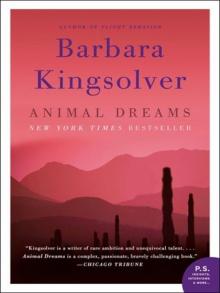 Animal Dreams: A Novel
Animal Dreams: A Novel The Poisonwood Bible
The Poisonwood Bible High Tide in Tucson
High Tide in Tucson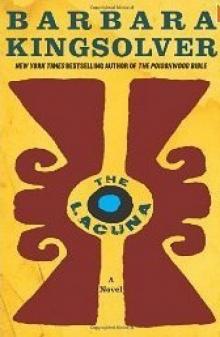 The Lacuna
The Lacuna The Bean Trees
The Bean Trees Animal, Vegetable, Miracle: A Year of Food Life
Animal, Vegetable, Miracle: A Year of Food Life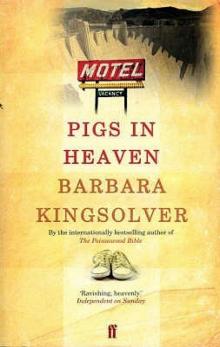 Pigs in Heaven
Pigs in Heaven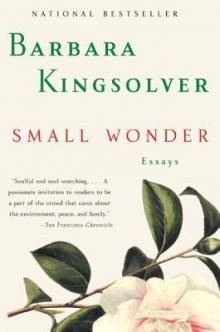 Small Wonder
Small Wonder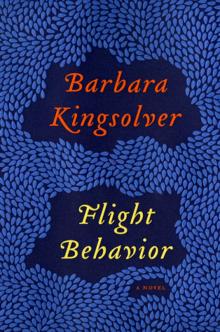 Flight Behavior
Flight Behavior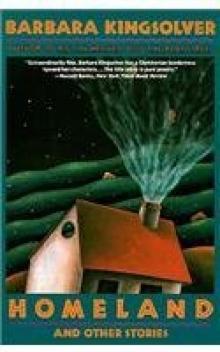 Homeland and Other Stories
Homeland and Other Stories How to Fly (In Ten Thousand Easy Lessons)
How to Fly (In Ten Thousand Easy Lessons) Unsheltered
Unsheltered Animal Dreams
Animal Dreams Prodigal Summer
Prodigal Summer Animal, Vegetable, Miracle
Animal, Vegetable, Miracle